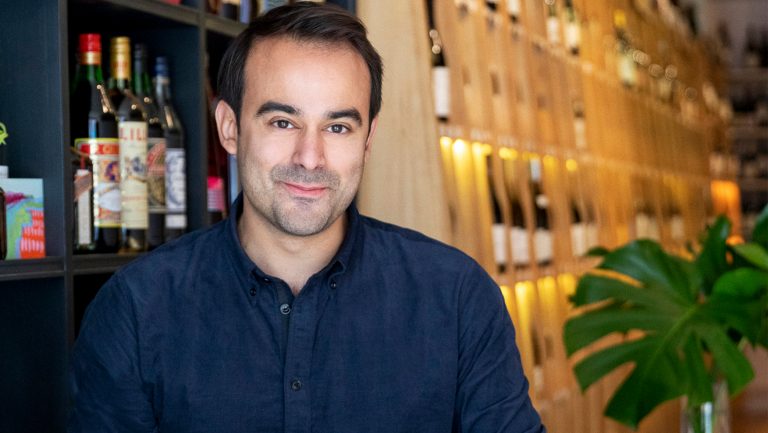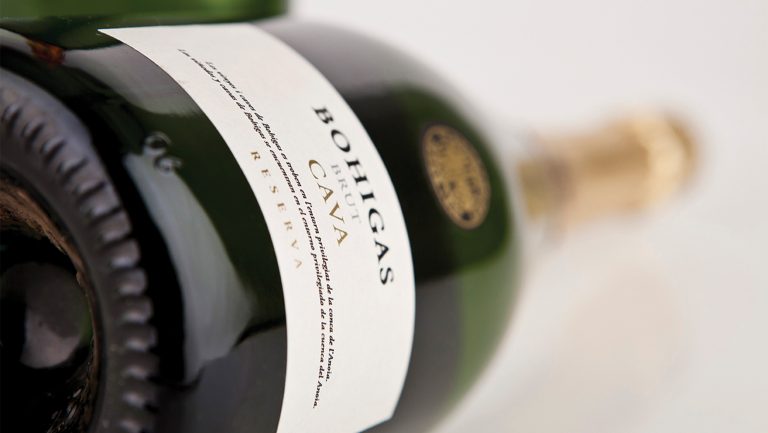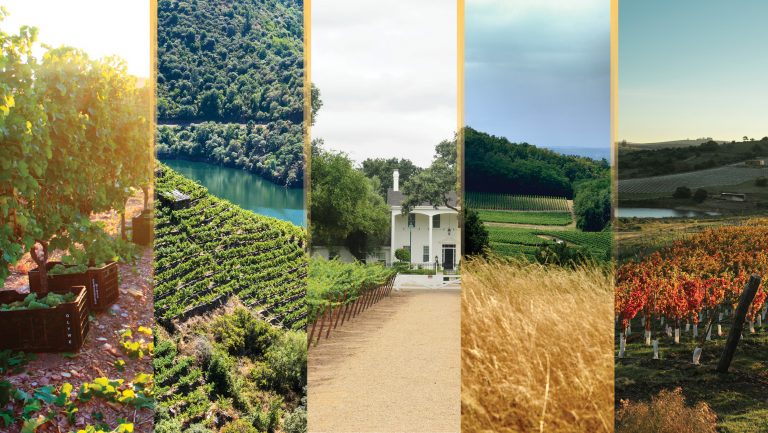Cava is undoubtedly Spain’s best-known sparkler, known for its mandatory use of the traditional method but typically generalized as a cheaper alternative to Champagne. It’s this characterization that spurred many high-end producers to distinguish themselves outside of the Cava DO over the last decade, with some stepping away to align under new designations (namely Corpinnat, Clàssic Penedès, and Conca del Riu Anoia) and others deciding to forgo classification altogether.
But in recent years, the Cava DO has announced changes that prioritize quality, farming, and terroir specificity—another frequent criticism of the category, which is dominated by large producers who often purchase and blend wine from several regions. The changes are likely motivated, at least partly, in reaction to the defectors of the region—but can they change the course of Cava’s future?
Conflict and DO Defectors
In recent years, much of the talk about Cava has been focused on those who have chosen to stop making it. Ask a geeky sommelier or wine buyer who their favorite Cava producers are and they’ll quickly rattle off names like Raventós i Blanc, Recaredo, Gramona, and Clos Lentiscus. The only problem? None of those producers make Cava anymore.

Don’t miss the latest drinks industry news and insights. Sign up for our award-winning newsletters and get insider intel, resources, and trends delivered to your inbox every week.
Spurred by the feeling that the Cava DO’s quality reputation is diluted by massive quantities of inexpensive sparkling wine without true ties to their origins, over the past decade, many of the best-known small, terroir-focused Cava producers announced that they would no longer label their wines as Cava.
Raventós i Blanc labels its wines Conca del Riu Anoia, named after the area near the town of Sant Sadurní d’Anoia, traditionally the heart of Cava production. Both Recaredo and Gramona are part of Corpinnat, a group formed in 2018 which broke away from Cava the following year (according to Ton Mata, director of Recaredo and president of Corpinnat, the group had proposed to operate within the DO but could not come to an agreement on the conditions with the Consejo). And Clos Lentiscus labels its wines as Penedès DO, which introduced the entirely organic Clàssic Penedès designation (for both traditional and ancestral method sparkling wines) in 2014.

The feeling among many U.S. buyers is that while there is significant innovation and quality in Spanish sparkling winemaking, it’s all happening outside of the Cava DO. “There are cool things being done with sparkling wine in Penedès—that don’t have the label Cava,” says Chris Leon, owner of Leon & Son wine shop in Brooklyn, New York and Grand Rapids, Michigan.
With the breakaway of the vast majority of Cava’s producers known for high-quality, non-formulaic sparkling wines, the image of Cava DO might seem to lean more heavily on mass-produced sparkling wines that lack character. “Imagine if growers in Champagne had said, ‘we’re going to leave and create something new,’” says Oscar Garcia, the buyer for 67 Wine in New York City. “It would be a huge conflict.”
A New Path Forward for Cava DO
But amidst this controversy, many are missing the positive movements within the DO. “I do think that it’s in our nature to be drawn to drama,” says Martin R. Reyes, MW, founder of wine consultancy Reyes Wine Group, who has partnered with Cava on several webinars. “But what’s left is still worth plenty of attention and admiration.”
Earlier this year, Cava’s Consejo Regulador announced several major changes to DO regulations, including two new overarching quality tiers, the higher of which prioritizes organic farming and subzone-specific labeling. “Our priority is communicating to the world that Cava is a serious, high-quality, traditional-method sparkling wine and that we have both quality and identity,” says Javier Pagés, president of DO Cava.
“This appellation is reinventing itself before our eyes. We owe it to ourselves to pay attention to what’s happening in this DO.” – Martin R. Reyes, MW
Beginning January 2022, all Cava will fall under two tiers: Cava de Guarda, the base level of Cava that must be aged for nine months, and Cava de Guarda Superior, which covers reserva, gran reserva, and paraje calificado wines. All of these Superior wines must be aged for at least 18 months (aging requirements for reserva, which were previously a minimum of 15 months, have been increased) and vintage-dated; vineyard yields are restricted, vines must be at least 10 years of age, and by 2025, all Cava de Guarda Superior will be 100 percent organic.
“The perception of Cava is that it’s just cheap, traditional-method sparkling wine,” says Rick Fisher, Spanish Wine Scholar education director for the Wine Scholar Guild. “But the reserva and gran reserva levels of Cava are spectacular. They rival many of the best Champagnes out there at a fraction of the cost.”

Cava’s commitment to organic production shouldn’t be overlooked, either. “Organic does not necessarily equate to quality, but it is a facet of the conversation,” says Reyes. “This is something bold, and everyone should follow Cava’s lead.”
The DO has also approved the use of subzones on the label, which are located across four major production zones (while 95 percent of Cava production comes from Catalonia, Cava may also be produced in Rioja, Extremadura, and Valencia). Wineries who estate-produce and bottle all of their Cava (rather than purchasing base wine from another producer, as is common for many large Cava wineries) may also use the term “Integral Producer” on their labels.
“What you’re seeing is a complete shift in the mindset to elevate the reputation of Cava,” says Fisher.
Playing Catch-Up?
In the opinion of Robert Gamble, the head sommelier at Catch in Las Vegas, DO Cava’s new regulations are essential to its survival. “The DO had to do this or something like it,” he says. “Corpinnat and Conca del Riu Anoia drive home the notion that the Cava DO was not on a good trajectory.”
But it’s difficult not to draw comparisons of these new Cava regulations to producers working outside of the Cava DO. Corpinnat (which operates as a trademark; it is not recognized as a DO) focuses on a specific territory in the heart of Penedès. All wines are made from organic grapes, estate-produced and bottled (producers may purchase grapes if they have a long-term contract with the grower and pay a minimum price), and aged 18 months on the lees.
“Before Corpinnat, the appellation had never wanted to do subzones,” says Mata. “Without Corpinnat, Cava wouldn’t have made any of these new regulations.”
That’s the perspective among some buyers as well. “In my opinion, the response from the DO is 100 percent guided by the decisions of all these producers [who have left],” says Garcia. Adds Leon, “When something is fringe and becomes popular the larger party will fold it into their platform … that’s what we’re seeing.”
Pagés cautions against this thinking, noting that the handful of producers who left weren’t the only ones pushing for quality and transparency in the DO. He also states that when he became president in September 2018, he asked Corpinnat producers to wait a few more months before leaving to see if change could happen from within. “In the end, a DO comes from a region and there is a set method, but people in the DO have different market strategies,” says Pagés. “I still tell [the Corpinnat producers] it’s a pity that we don’t all [work] together as one. Why don’t you become part of the group that even internally, you lead?”
“The perception of Cava is that it’s just cheap, traditional-method sparkling wine. But the reserva and gran reserva levels of Cava are spectacular. They rival many of the best Champagnes out there at a fraction of the cost.” – Rick Fisher, Wine Scholar Guild
There are small- to medium-sized, organic Cava producers who estate-bottle their wines and remain within the DO, such as Bohigas Cava. “We did ponder at a certain point the possibility of leaving Cava, but then we learned the Consejo Regulador was going to make a radical change in its internal and external structures, and that those changes were going to be in the direction to improve the imagine of Cava,” says Maria Casanovas Giró, the director of Bohigas Cava, who falls within and plans to use the Valls d’Anoia-Foix subzone (which covers roughly the same area as Penedès DO).
Reyes recalls asking a producer whether she planned to leave Cava. “She said, ‘No, I’m not going to leave because this is my identity. If Cava needs to be fixed, then we need to fix it from the inside,’” he says.
Both Mata and Pagés speak highly of one another, and Mata does state that he is happy about the change that Cava is making—though those changes seem unlikely to draw Corpinnat producers back into the DO. He is protective of Corpinnat, firmly stating that Corpinnat is a more overarching commitment to these principles.
“Cava will always exist, and I want the best for the future of Cava,” says Mata, “but I would very much like to have one unique name for high-quality sparkling wines in Penedès—and I would like that to be Corpinnat.”

The Future of Cava
Though Cava’s new regulations go into effect soon, long-term effects are difficult to predict—and challenges remain. So many new regulations and labeling terms have created confusion among U.S. buyers and consumers alike; many buyers interviewed had misconceptions about what the parameters for Cava DO production even were, with some positing that the DO was eliminating all international varieties (they are not; while the focus remains on local varieties, Chardonnay and Pinot Noir are still permitted).
“I think it’s going to take a major education effort on the part of Cava [for the market to embrace new labeling],” says Fisher, who notes that all of the subzone names are Catalan, furthering confusion. Garcia notes that while subdividing regions is more common today (pointing to Chianti Classico’s Unità Geografiche Aggiuntives, for instance), there’s also a certain amount of subzone fatigue. Pagés notes that the DO has plans to partner with key trade members in order to educate them on Cava’s new regulations and initiatives, and it launched the digital Cava Academy earlier this year.
Availability presents another problem: These new regulations largely pertain to the higher-tier Cava de Guarda Superior wines, of which the U.S. market doesn’t see many. Cava de Guarda, which is not subject to these more restrictive quality measures, was responsible for 88 percent of the DO’s production and 93 percent of the DO’s exports in 2020. (However, the U.S. was the number one export market for gran reserva, a subset of Superior).
And of course, the impact of these regulations on quality remains to be seen. “Only the future will be more definitive of if [these new regulations] will help them in terms of quality control and definition,” says Garcia.
Despite this unclear future, it’s an exciting time for Spanish sparkling wine—and that does include Cava. “I am excited to see the Corpinnat wines hit the market, but I am equally as excited to see the impact of the new rules in the DO,” says Gamble. “This is an opportunity for the rising levels of quality to elevate the reputation of all producers in the region.”
“This appellation is reinventing itself before our eyes,” adds Reyes. “We owe it to ourselves to pay attention to what’s happening in this DO.”

Dispatch
Sign up for our award-winning newsletter
Don’t miss the latest drinks industry news and insights—delivered to your inbox every week.
Courtney Schiessl Magrini is the editor-in-chief for SevenFifty Daily and the Beverage Media Group publications. Based in Brooklyn, she has held sommelier positions at some of New York’s top restaurants, including Marta, Dirty French, and Terroir, and her work has appeared in Wine Enthusiast, GuildSomm, Forbes.com, VinePair, EatingWell Magazine, and more. She holds the WSET Diploma in Wines. Follow her on Instagram at @takeittocourt.







